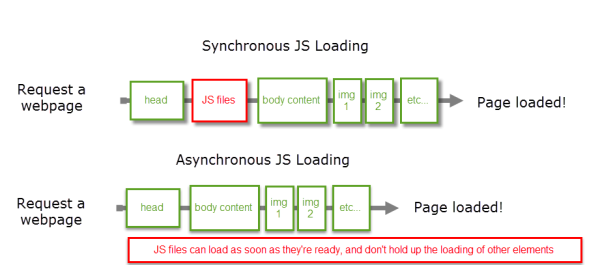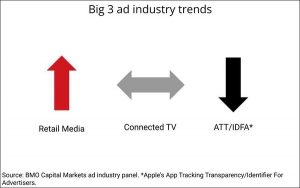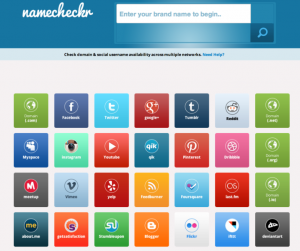
After the top notch article on migrating to Universal Analytics using Google Tag Manager, we got some feedback from you that some background on what tags and tag management are would be helpful. We heard you and we’re here to demystify site tags and how to keep them in order.
What is a “Tag” Anyway?
There are hundreds of services for tracking, advertising, site customization, and generally souping up your ability to measure, reach, and convert your visitors. The vast majority of them rely on javascript to track the activity of visitors on your website and report on or respond to their behaviors.
When people talk about “tags” they’re talking about the snippets of javascript provided by 3rd party services like Google Analytics, DoubleClick, AdRoll, Adobe SiteCatalyst, etc. Every 3rd party tool like these you bring to your site to improve your ability to reach & serve customers means adding a new piece of javascript – aka a tag – to your site.
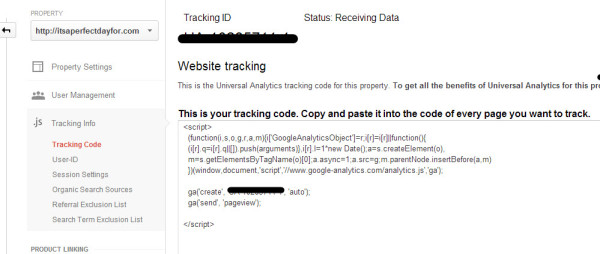
And all that is assuming you can even get them implemented! Since every new tool means a new piece of javascript has to be put onto your website, either site-wide or in very rule-specific places, it means you have to turn to IT and get them to prioritize your tagging needs. Even once you’ve gotten everything put into place, every change or troubleshooting session means another turn in the IT queue, which could cost you hours, days, or weeks of data.
Managing tags in this way quickly becomes a mess that drives teams apart. You aren’t happy because your tools don’t work. They aren’t happy because they have to reorganize their schedules to implement them. It leads to awkward team building exercises, and nobody wants those. (Especially when Dave from HR accidentally gets decaf box ‘o joe at your retreat, causing an unexpected but not really very positive bonding experience between Marketing and IT as they vow to fill his car with shaving cream, right after they figure out who is going to sneak out and get real coffee.)
All that sounds incredibly grim, and preventing these issues is exactly why tag managers exist.
What is a Tag Manager?
Tag managers are tools designed to accomplish two main things:
- Minimize code deployed on websites and in apps
- Allow many pieces of code to be managed from a single area without editing the site or app
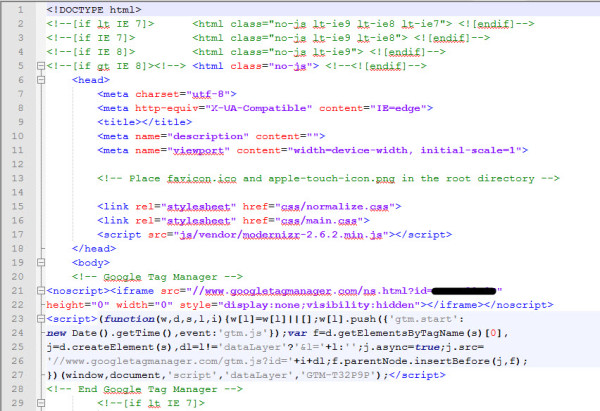
A tag manager is comprised of two main components, the management platform and the code that is deployed in your website or app. The code, like the example shown above, is a single piece of javascript that gets inserted into your site or app, typically near the top so it can load and execute early.
The management platform is typically a menu-driven interface that allows you to create tags in an adlib fashion, where you choose from a set of common tracking and application tags and insert your account details, unique IDs, criteria for data capture, etc.
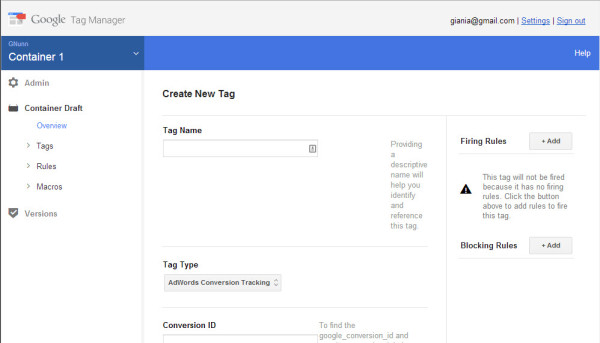
How Do Tag Managers Improve Your Ability to Get Conversions?
Site Load Times Improve
The short version is: if your site loads for shit because you overloaded it with tracking codes, you’re going to lose valuable time for first impressions, and your rankings may suffer too. It literally costs you money to have a slow site.
Consider the following stats from an article from Peep about improving site speed:
- 47% of people expect pages to load in 2 seconds or less.
- 57% abandon pages taking 3 seconds or more to load.
- 8% of people report slow page load as a reason for purchase abandonment.
Not only can it impact your visitors on site, but sluggish site load speeds can impact your ability to show up in searches that drive customers to your site in the first place! Since 2010, Google has cautioned webmasters that sluggish page loads, particularly on mobile, could and would be used as part of the algorithm for ranking.
The more calls to outside resources you add to your pages, the more likely you are to experience slowdowns in page load. Tag managers use one snippet of javascript to control your tags, drastically reducing the number of requests to outside sources when your pages load. That snippet also loads asynchronously, which means that it loads separately from the rest of your site files, outside of a strict loading order.
Many individual tags may load asynchronously, but they will have to be individually read and executed. That execution often entails requesting information from the page, which could still be loading. Tag managers resolve this by reducing the number of code calls the visitor’s browser has to make down to one. All calculations on how and when to fire tags can then happen while the rest of the page loads uninterrupted.
It’s also common for a tag manager to use a Content Delivery Network (CDN), meaning that you don’t have to rely on a single server to respond to get tags to work correctly; instead of one server, the CDN will identify the most optimal server to pull your tags from, and the fastest server(s) will be the one to load your tags.
Another way to save speed is by consolidating data shared by multiple tags into one area that feeds all of the tags, known as a data layer. For example, if you report details of purchases on your site as conversions to Google Analytics eCommerce, AdWords, and Marin Software, deploying each individually would require requesting purchase information three times, in the specific setup of each tag. Tag managers leverage this “data layer” to set a single point of reference that all three can pull the necessary data from.
Avoid Or Rapidly Fix Site Errors
It’s all well and good to want your site to load faster, but imagine a scenario in which one of your tags was experiencing an error that caused your site, or key functionality driven by tags to fail completely?
Anecdotally, I recall at least two instances of 3rd party tag providers (one javascript-loaded trust logo, and one tracking service) that had downtime on their servers, and the placement of that code caused massive increases in page load times on the sites they were on, and in at least one instance caused entire pages to fail at loading.

The only way to address that issue at the time was for Marketing and IT to coordinate to audit the entire site and pull the tag from every place it was on, while an exec was pulled in to calls with the service provider talk to someone about receiving compensation for site downtime. It was an utter disaster.
Not only do slow downs and page load failures due to javascript errors turn away customers in droves during the time it’s at it’s worst, but if they bounce to a competitor because you’ve lost your window for a good first impression to a major failure, you may lose them (and their potential referral business) forever.
Tag managers solve this by providing you, an intrepid marketer, a single interface that allows you to activate and deactivate tags, and set rules to manage when and how tags fire.
Take this example from Google Tag Manager:
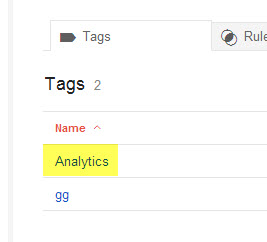
Choose the offending tag from the list of tags.
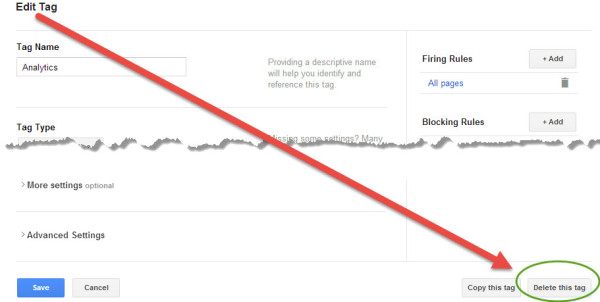
Select the “Delete this tag” option.
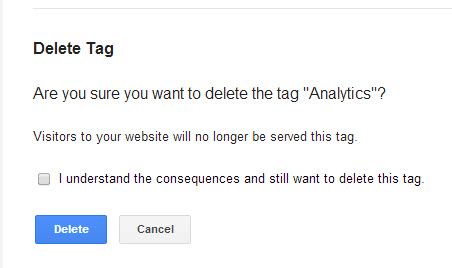
You’ll be prompted to confirm your choice to delete.
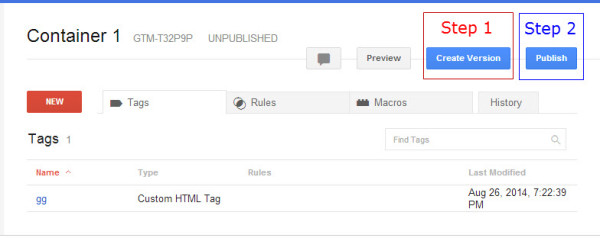
Once you’ve deleted the broken tag, use Create Version to save a copy of your current tag configuration, then click Publish to make the changes live. Your site immediately stops using the broken tag.
This method of emergency management in Google Tag Manager relies on key feature: versions. You can create a version of your sets of tags and switch between them. Like this:
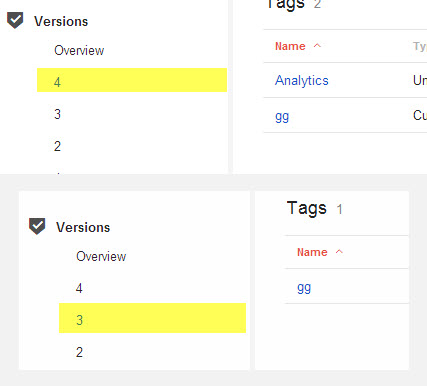
Choose a previously saved version of your tag setup that doesn’t contain the broken/offending tag and roll back by clicking publish on that version. This versioning aspect also allows you to delete and create tags as needed, with the ability to publish different versions as needed with minimal effort.
This takes a potential crisis that could grind your day to a halt, especially for IT and Marketing, and turns it into something that one person can solve within minutes. Log in, deactivate the offending tag, and save the changes. The tag will be deactivated, your site will resume regular loading, and you’re free to focus on following up with the vendor on how to make up for lost data or functionality.
Save Yourself (And Your Co-Workers) Time & Effort
Deploying tags one at a time requires edits to your site every time. That means researching how to deploy a tag, getting that tag and instructions to IT, waiting for deployment, testing the tag, and then making sure everything actually went as planned when it’s finally live.
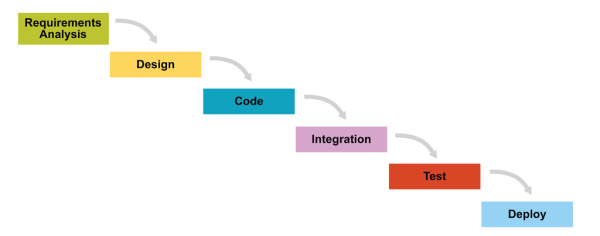
Source: ScrumReferenceCard.com
Marketers or solo entrepreneurs who manage sites on their own may end up getting hung up on technical complexities of tag deployment. This means spending time researching the best way to plug your tags into your site, experimenting with unfamiliar code, breaking things, swearing, getting that ill-advised 8th cup of coffee, and worst of all possibly scrapping potentially valuable tools due to deployment difficulties.
Tag managers, at their simplest, require the deployment of a single line of code onto your sites. One line of code means one trip through the development cycle. After that, anyone confident enough with a menu-driven interface can deploy new tags to the site at any time, no lines, no waiting. Although there are risks that come with that kind of freedom, it does enable marketers and data jockeys fast means to deploy key data gathering and leveraging tools. Additional tag manager features like rules and macros can be used to fine tune tag behavior by setting conditions for tag use or data elements without writing new code.
The main caveat to this seemingly miraculous scenario of One Line Of Code To Rule Them All is: certain things, such as eCommerce tracking, require some IT involvement because it involves setting up what’s called a “data layer” that contains dynamic content associated with fixed variables, e.g. product name, price, quantity. Once established, a data layer can then feed this type of data to any tag that needs the data, removing the need to repeat the process.
Google published a few case studies from companies using Google Tag Manager that feature a number of operational and functionality improvements. In one report, Airbnb was able to shorten days long tag deployment to a matter of a couple hours. Ensighten, a paid tag management service, has a testimonial boasting 600 hours of development time saved, and another from a company who took tag deployment from 6 weeks to one.
What Are My Options For Tag Managers?

The go-to for many people is Google Tag Manager. As with most popular Google products, it’s free. It has full implementation templates for Google Analytics, AdWords, DoubleClick, and a few other popular measurement and advertising tools. It’s got a lot of powerful options and tools, like the versioning aspect mentioned above, and a number of highly powerful functions outlined in a recent ConversionXL article by Yehoshua Coren.
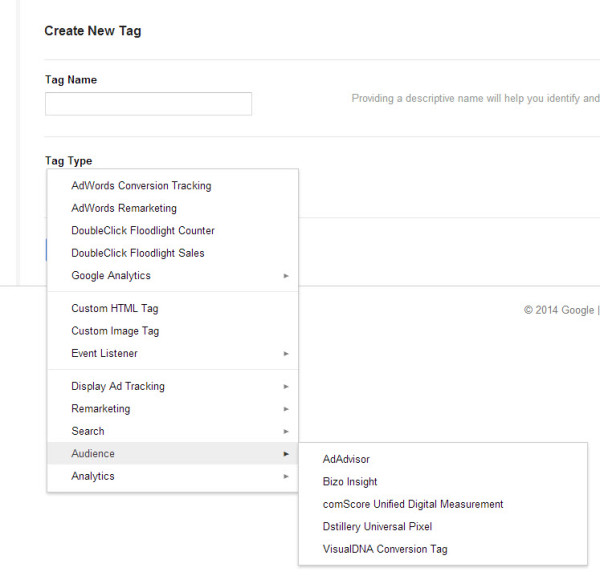
The major downside of Google’s Tag Manager however is that, outside basic template-driven deployment, it can become complicated quickly. ECommerce implementation requires the previously mentioned data layer, that requires research and deployment. Things like Events require research to understand how to properly implement.
Because it’s a free service, it means researching solutions for all those things on your own. However, because it’s a popular Google product, there is documentation, a set of dedicated forums, and of course many articles from users who have reached solutions.

Filament.io – Filament.io has a suite what they refer to as “apps” which you can install, like Google Analytics, social sharing tools, and MailChimp email forms. The bulk of your tags will be managed through an app they call CodeDrop, which allows any type of custom tag to be added to your site.
![]()
They say they’re a UX and Design company and it shows! Very friendly interface with lots of the little touches like success messages, first-use hints, etc. that make it very easy to pick up and go. It’s got a WYSIWYG editor that lets you drag and drop code chunks of all kinds onto your site. It has WordPress integration through a plugin, and some additional filter options that are specific to WordPress.
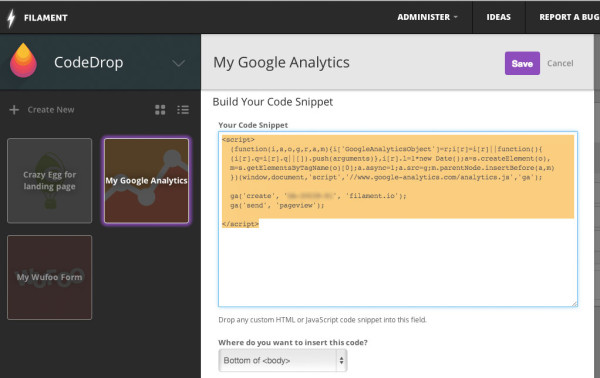
The downside is they don’t have many tags implemented as apps yet, so most of your deployment will take place via CodeDrop. In the case of eCommerce tracking, it may mean some IT (or at least code savvy) involvement. There also doesn’t appear to be a CDN to speed up tag delivery.
This is a free service with a Pro upgrade option that gives you access to one on one help.
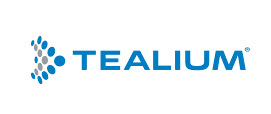
Tealium is a paid tag management service. Because tag management is their bread and butter, they do not play around with features. They have what they refer to as “turnkey integrations” with over 600 different vendors that utilize site tags, meaning that there’s a menu or template-driven method to set up and deploy your tags from those vendors.
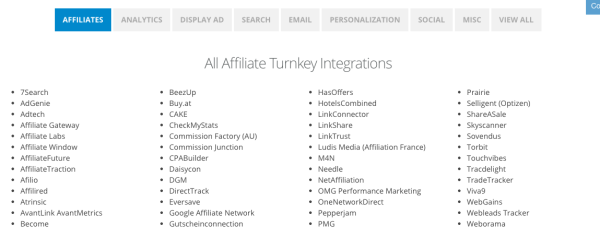
They have tools that allow marketers and IT pros to check on the placement and performance of deployed tags, ensuring that they’re placed on the right pages and behaving as expected. Tealium boasts the use of no fewer than three major CDN providers to improve tag speed. A browser plugin is available to assist in data and tag auditing, among other perks.
They have a number of case studies and white papers, with one client citing a 49% improvement in page load speed through checkout.
Because they’re positioned as an enterprise solution, their plans start at $ 149 a month and go up from there. But they’re also #57 on the Forbes list of America’s Most Promising Companies.

Ensighten is another premium service; they also purchased TagMan, a pioneer in the tag management space, in March of this year. They have an entire suite of digital marketing tools available, with the tag management aspect falling under the Ensighten Manage™ umbrella.
On their facts page, they boast 40% page load improvement. They use a proprietary method called the Ensighten Tag Delivery Network™ in a manner similar to the CDNs used by other services to expedite and smooth out how tags are loaded alongside web page content.
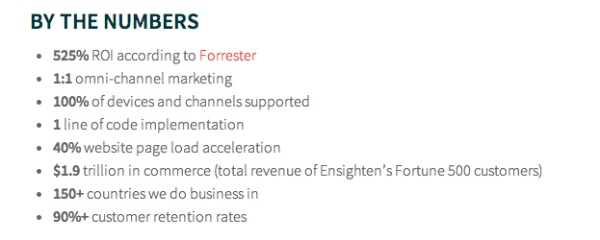
Their pricing is volume based, so you will have to contact them to get a sense for pricing. Just last month they were honored by Inc. Magazine, earning spot #147 on their renowned Inc. 500|5000 list, positioning them as a company with a strong base.

Speaking of well-established companies, Adobe also offers a tag management solution. This digital giant is also rather tight-lipped about their pricing structure, but like other enterprise level solutions, they offer a suite of services for online marketers, and dedicated service. They also lack some of the case study data and feature descriptions that make other options appealing. However, if you’re involved with Adobe for other aspects of your online marketing, it may be worth your time to investigate this option for tag magement.
Conclusion
If you’re currently deploying all of your javascript in independent code snippets, stop.
There’s a ton of performance optimization that can come from using a Tag Manager that isn’t as obvious as a call to action or landing page design. This can also make a huge difference in the way internal teams collaborate and execute on work that actually makes a difference.
Business Articles | Business 2 Community
(437)
Report Post
